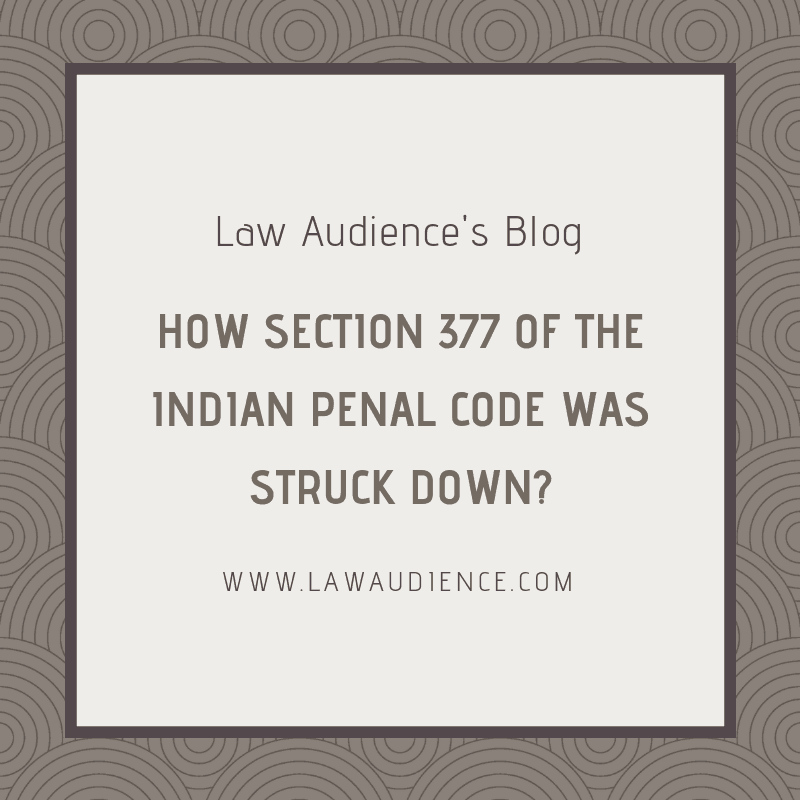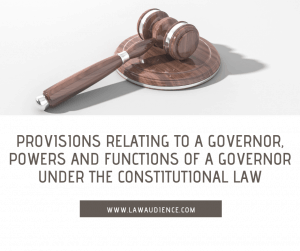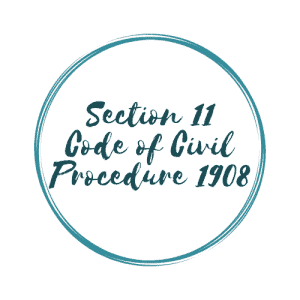AUTHORED BY: MS. RISHITHA.K, B.B.A.LL.B, 3RD YEAR STUDENT AT IFIM LAW COLLEGE & RESEARCH WRITER AT LAW AUDIENCE & EDITED BY: MS. SAKSHI SONKER, 4TH YEAR STUDENT, RAJIV GANDHI NATIONAL UNIVERSITY OF LAW, PUNJAB & ASSISTANT EDITOR AT LAW AUDIENCE.
I. INTRODUCTION:
“Look for a rainbow in every Cloud’, said Justice Dipak Misra while delivering the S.377 verdict. In the land where the majority of the population is devoted to morality and culture, had recently made a remarkable twist is legalizing consensual intercourse in private among homosexuals. Though the judgement was criticized by many, it was welcomed by both the supporters and members of the LGBTQ community. The very aim of the judgement was to make progress in societal development. This judgement might form the foundation for the marital and adoption laws for the LGBTQ community.
II. ORIGIN OF THE PROVISION:
The provision was introduced in 1864 during the British Raj. The holy book of the British prohibited such kind of sexual relationships as it was “against the will of God and Man”, thus the provision ended up being introduced. In 2013, gay marriage was legalized in England and Wales. It took India almost 150 years to recognize the rights of the LGBTQ.
III. WHAT IS UNNATURAL ABOUT S.377?
The provision which prohibits consensual sex among homosexuals is S.377 of the Indian Penal Code, 1860. The section reads as follows:
377 of Indian Penal Code: Unnatural offences:
“Whoever voluntarily has carnal intercourse against the order of nature with any man, woman or animal shall be punished with imprisonment for life, or with imprisonment of either description for a term which may extend to ten years, and shall also be liable to fine.”
The vagueness of the provision is the reason for all the chaos. The provision criminalizes serious offences like bestiality and sodomy. The term “against the order of nature” is not defined properly in law. Anything which is not in accordance with the laws of procreation is considered unnatural. Thus, this very phrase makes sex between two consenting individuals of the same gender a criminal offence. The fact that the intercourse was consensual among the individuals is immaterial in the eyes of law. This provision fails to recognize the fact that such sex is not harmful to society. Hence, the prohibition inflicts stigma among the LGBTQ community.
IV. THE TIMELINE OF CASES WHICH LED TO THIS REMARKABLE JUDGEMENT:
a) Naz Foundation v. Govt. of NCT of Delhi (2009):[1]
The Naz Foundation, an NGO filed a writ petition challenging the validity of S.377. The division bench of the Delhi High Court held that consensual sex between homosexuals is not an issue. They struck down parts of the provision claiming it to be arbitrary.
b) Suresh Kumar Koushal v. Naz foundation (2013):[2]
The 2009 judgement was overturned by the Hon’ble Supreme Court and S.377 was reinstated in the Indian penal code, the bench held that S.377 is not unconstitutional. It also criticized that the judgement of the High Court of Delhi to be highly unsustainable.
c) K.S. Puttuswamy v. Union of India (2017):[3]
This landmark judgement held that Right to Privacy is guaranteed under Art. 21 of the Constitution of India. The judgement emphasized the need to protect certain sensitive information which included sexual orientation. Thus, this ended up being an implied acceptance for the LGBTQ rights in our country.
d) Navtej Singh Johar v. Union of India (2018):[4]
This landmark judgement partially struck down S.377 of the Indian Penal Code. It still prohibits Bestiality, sodomy and consensual and non-consensual sex with minors. The provision violates the fundamental rights guaranteed by the Constitution. The following are the rights which are violated by the provision.
e) Art 14 (Right to Equality):
This Article gives immunity against all kinds of discrimination to the citizens of India except discrimination which permitted by law. No one is to be discriminated on the basis of gender but delimiting the LGBTQ to choose between two genders is unjustifiable. The LGBTQ community is discriminated on the basis of their sexual orientation. Thus, there is a violation of their right.
f) Art 19 (1) (a) (Right to speech and expression):
S.377 imposes a restriction on the freedom to express themselves. It poses a threat while expressing their identity and sexual orientation. This imposes alienation and stigma on the LGBTQ community.
g) Art 21 (Right to Life and personal liberty):
The five-judge bench observed that the privacy, identity and dignity of the LGBTQ community are in peril. Two judges from the bench observed that imposing such prohibition makes the LGBTQ hesitant to seek medical advice regarding matters pertinent to intercourse or venereal diseases. Thus, the restriction infringes their right to health. It also curtails their right with respect to the choice of their partner. The bench held that the State doesn’t have the power to choose who should partner with whom.
In Shakti Vahini v. Union of India and others and Shafin Jahan v. Asokan K.M.[5] wherein it has been clearly recognized that an individual‘s exercise of choice in choosing a partner is a feature of dignity and, therefore, it is protected under Articles 19 and 21 of the Constitution.
Chief Justice Dipak Misra held that societal morality can’t curb the fundamental rights of a person. They also held that sexual orientation is biological; nobody has control of their feelings. The misconception of attraction towards the same sex as a disease has been washed out in this judgement. This might pave the way for the evolution of personal laws with respect of to the LGBTQ community. This remarkable judgement is societal progress. The bench utilized the constitution as a basis to transform the society. Thus, the vagueness which prevailed in the provision has been rectified by partially striking down the provision.
[1] 2009 SCC OnLine Del 1762
[2] (2014) 1 SCC 1
[3]: WRIT PETITION (CIVIL) NO 494 OF 2012
[4] (2018) 10 SCC 1
[5] AIR 2018 SC 1933



